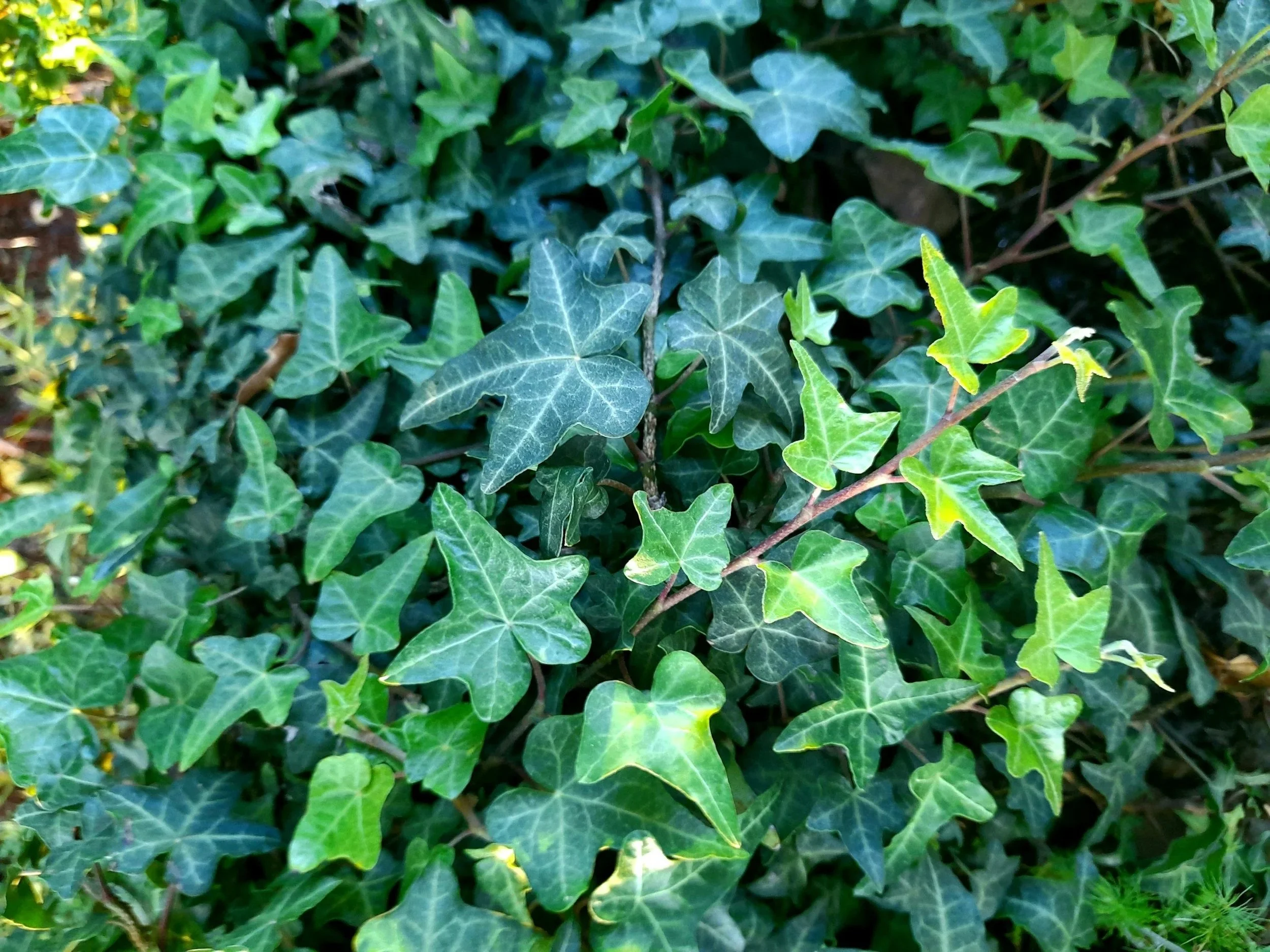
Drum Point English Ivy Removal Program
English ivy (Hedera helix) is an evergreen, woody vine native to Europe and Western Asia that is widely planted as an ornamental groundcover and for covering walls, fences, and trellises. It grows rapidly, spreading along the ground or climbing vertical surfaces with aerial rootlets, and has glossy, lobed leaves on juvenile plants that become more oval on mature flowering shoots.
What is English Ivy?
While English Ivy provides shelter for wildlife and berries for birds, in many parts of North America it is considered highly invasive, forming dense mats that outcompete native vegetation and climbing trees where it can weaken and smother them. Its adaptability to shade, drought, pollution, and poor soils makes it especially persistent, and controlling it often requires repeated manual removal or careful herbicide use. English ivy poses significant ecological risks when it escapes cultivation, so reducing its spread is key to protecting Calvert County’s green spaces.
Why is English Ivy Harmful?
This program will establish a permanent stewardship framework for SCLT lands. As lots are restored, trained volunteers and neighborhood environmental committees will maintain them, ensuring that invasive plants do not return and native biodiversity thrives. Future stewardship work will expand beyond ivy to address other invasives, trail maintenance, erosion control, and habitat enhancement—ensuring the long-term ecological health of all SCLT properties.
Mission of the Program:
Program Overview
-
SCLT’s stewardship mission is to protect, maintain, and enhance the ecological integrity of its conserved lands.
This includes:
- Monitoring the condition of conservation properties.
- Managing threats such as invasive plants and habitat degradation.
- Restoring native biodiversity through targeted plantings and habitat care.
- Engaging the community in the long-term care of shared open space.
-
Overall Program Goal: Create a sustainable, volunteer-supported conservation land stewardship program that protects the ecological health of 76 SCLT-owned lots.
Year One Priorities:
- Remove invasive English ivy from 25 high-priority lots.
- Restore cleared areas with native groundcovers and plants.
- Install permanent “Conserved Open Space” signs to mark restored sites.
- Train and engage community volunteers as long-term stewards.
-
1. Protect and restore native biodiversity across 20 acres of conserved land.
2. Establish an ongoing stewardship network of trained volunteers.
3. Remove invasive species, beginning with English ivy.
4. Replant restored sites with native species to encourage long-term recovery.
5. Educate residents about their role in conserving and caring for local open space.
-
Assessment & Planning:
- Conduct pre-removal site assessments to map invasive cover and identify restoration priorities.
- Draft lot-specific stewardship guidelines for volunteer use.
Volunteer Stewardship Days:
- Host five community-wide work events in Year One.
- Provide signage, tools, gloves, instruction, poison ivy treatment, and refreshments.
On-the-Ground Stewardship:
- Remove ivy by cutting, lifting, and clearing vines from ground and trees.
- Where needed, plant limited native groundcovers in treated areas to aid restoration.
Follow-Up & Monitoring:
- Conduct post-removal visits to track regrowth, provide maintenance guidance, and record stewardship progress.
-
Over the three-year program, outreach will target approximately 900 nearby residents. In Year One, outreach will focus on the 300 residents living near the 25 priority lots.
We will encourage stewardship participation by:
- Volunteering at removal and planting events.
- Assisting on challenging lots that require extra skill or equipment.
- Hosting training sessions on private properties.
- Helping with native plant and tree giveaways.
- Supporting lot assessments and ongoing monitoring.
Partnerships will include: Local garden clubs, Master Naturalists, Master Gardeners, Calvert Stewards, and neighborhood associations.
-
Success will be measured by:
- Lots improved: 25 in Year One; 76 total in three years.
- Area restored: ~20 acres total in 3 years.
- Volunteers engaged: 30 in Year One; 80 over three years.
- Invasive reduction: 80% removal of ivy on treated lots.
- Native plantings installed where ground cover is needed
- Photo monitoring and surveys documenting ecological improvement.



